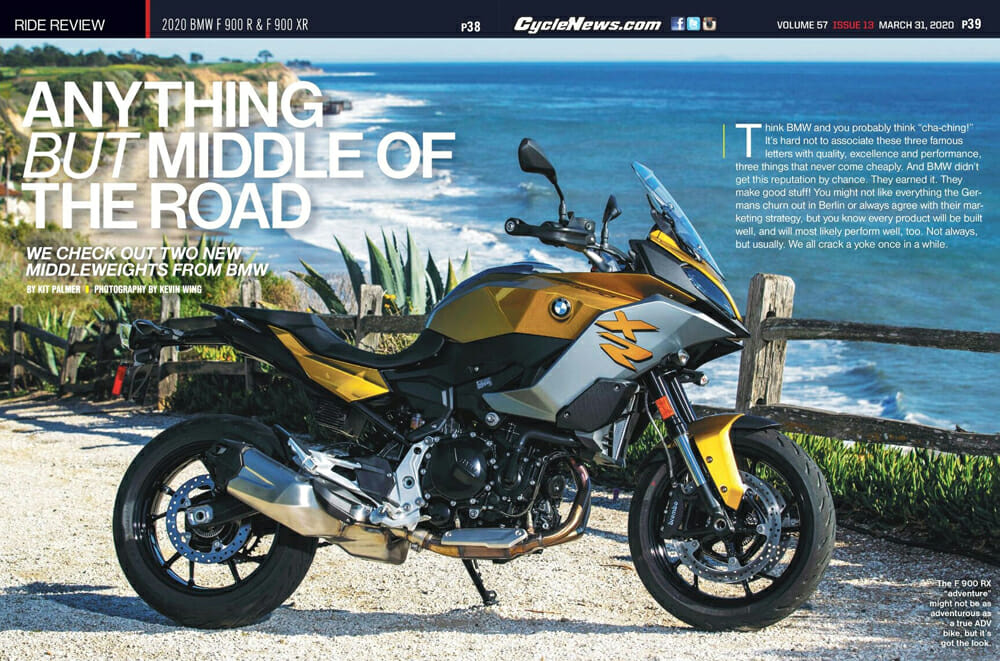Kit Palmer | April 3, 2020
2020 BMW F 900 R & F 900 XR Review
We check out two new middleweights from BMW.
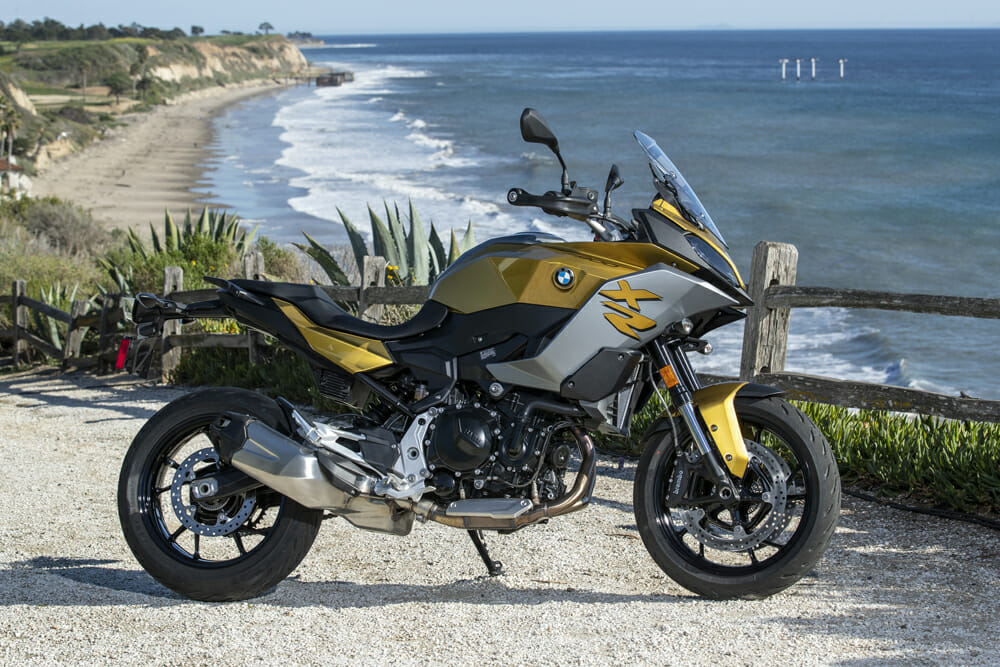 The F 900 RX “adventure” might not be as adventurous as a true ADV bike, but it’s got the look.
The F 900 RX “adventure” might not be as adventurous as a true ADV bike, but it’s got the look.
Photography by Kevin Wing
Think BMW and you probably think “cha-ching!” It’s hard not to associate these three famous letters with quality, excellence, and performance, three things that never come cheaply. And BMW didn’t get this reputation by chance. They earned it. They make good stuff! You might not like everything the Germans churn out in Berlin or always agree with their marketing strategy, but you know every product will be built well, and will most likely perform well, too. Not always but usually. We all crack a yoke once in a while.
Problem is, not everyone has the bank account to put a BMW in their garage, mostly the younger crowd, a crowd BMW desperately wants to tap in to. Get ‘em young and there is a good chance they will become BMW aficionados for life. The Japanese manufactures figured this out a long time ago, and many European manufactures have caught on, too. BMW is slowly coming around. The new F 900 XR ($11,695) and F 900 R ($8995) are proof.
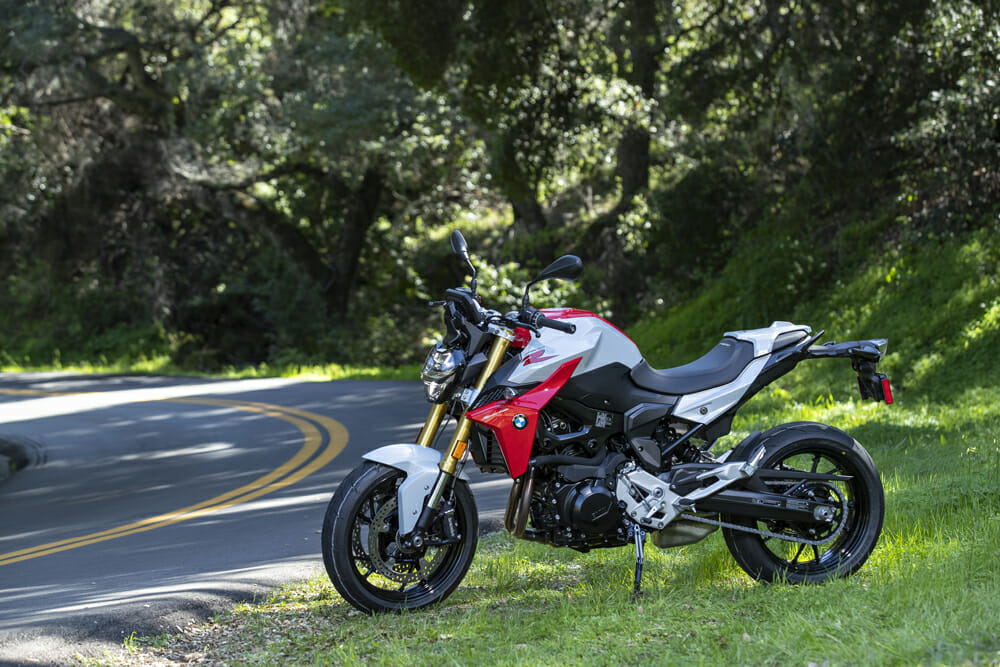 BMW refers to the naked F 900 R as its dynamic roadster.
BMW refers to the naked F 900 R as its dynamic roadster.
2020 BMW F 900 R & F 900 XR Review | What’s Inside?
Here are two new affordable and approachable middleweights that BMW is using to take dead aim at the younger generation. A generation that also may be new to motorcycle riding but aren’t willing to sacrifice quality and performance, and bling, of course, while still wanting to be frugal when it comes to their checkbook. But the bottom line is they want a BMW.
BMW felt the previous F 850 GS was a good inspiration for their new project. At the heart of the F 900 is an 895cc inline two-cylinder engine that was introduced in 2018 with the F 850 GS but receives a 42cc increase. Like the 850, the engine is built in China where it is then shipped to Berlin for the motorcycle’s complete assembly. Despite the overall seemingly close similarities between the F 850 and the new F 900, BMW says the two bikes are very much different in just about every way and share only a few part numbers throughout the motorcycle.
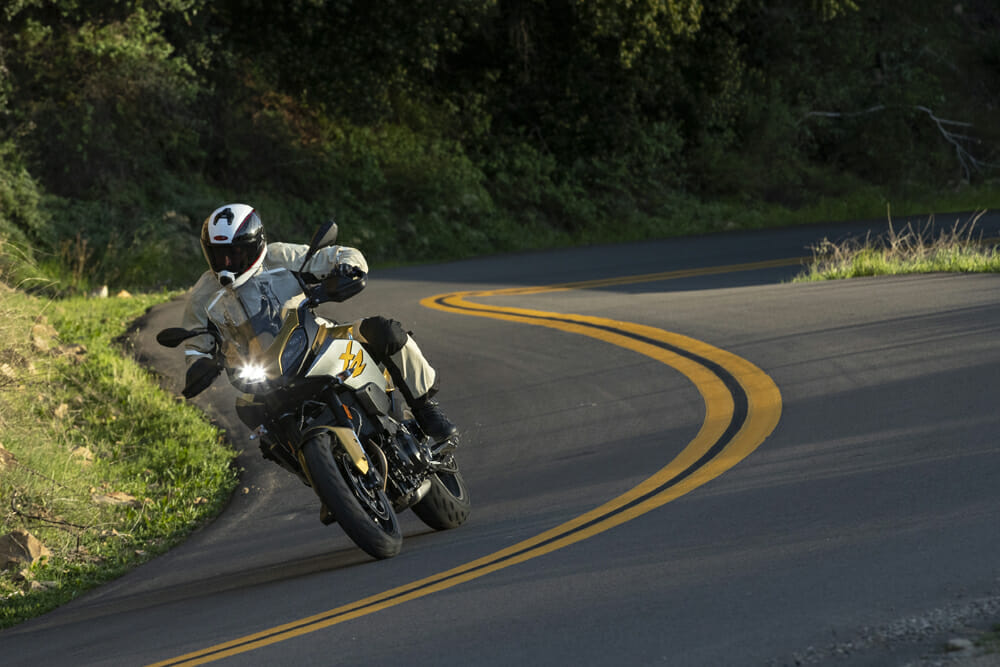 For $2700 more than the $8995 F 900 R, the F 900 XR gets you increased suspension travel and fuel capacity, improved aerodynamics, and hand protection, plus more available options.
For $2700 more than the $8995 F 900 R, the F 900 XR gets you increased suspension travel and fuel capacity, improved aerodynamics, and hand protection, plus more available options.
Okay, back to the engine. Compared to the F 850, the F 900 engine has a two-millimeter larger bore (which pushes displacement up to 895cc), a redesigned cylinder head, new forged pistons, and a bump in compression. BMW claims the 900 divvies out 99 horsepower at the crank, which is up 10 percent over the 850.
While BMW will offer upgrades for both bikes, two riding modes are included in the base package: “Rain,” “Road,” with “Dynamic” and “Dynamic Pro” added as a premium option (Ride Modes Pro). With the upgraded Dynamic and Dynamic Pro, riders receive more ability to customize throttle response, traction control (DTC) intervention, engine braking (DBC), and cornering ABS. There isn’t much difference between Dynamic and Dynamic Pro. Dynamic Pro goes a couple of steps farther by altering allowable rear wheel spin and disabling wheelie control.
The engine rides in a steel-bridge frame similar to that of the F 850.
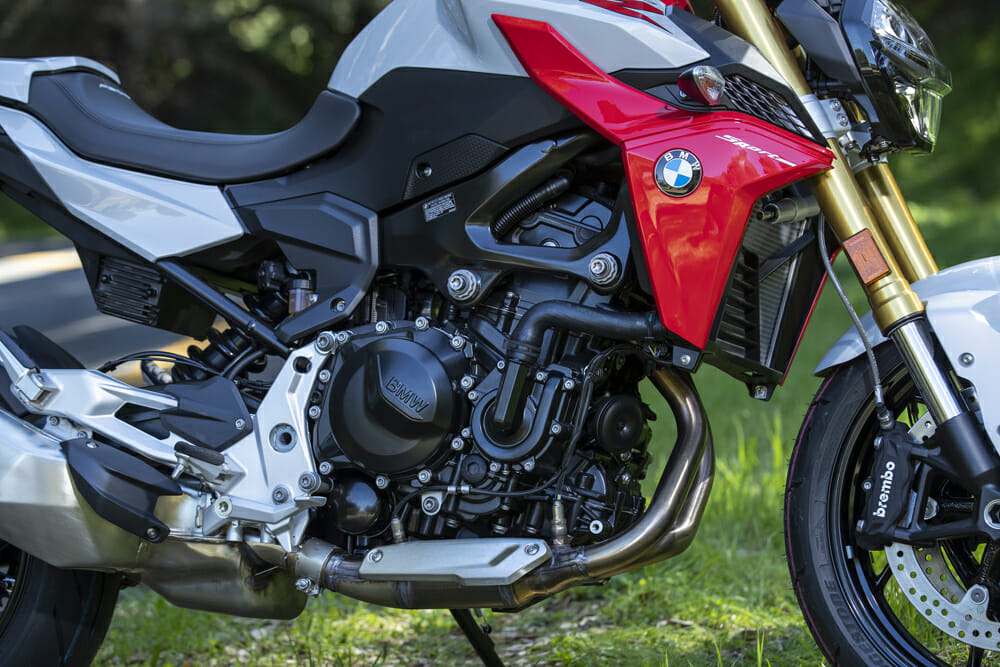 The F 900’s motor is built in China but shipped to Germany where the F 900 is assembled.
The F 900’s motor is built in China but shipped to Germany where the F 900 is assembled.
Braking comes courtesy of four-piston radial brake calipers biting on dual 320mm discs up front and single-piston floating caliper and 265mm single disc in the rear.
You might be wondering what’s the difference between the F 900 R and F 900 XR, anyway. The R falls into BMW’s “Roadster” category and the XR into its “Adventure” category, and they are aimed at different riders. Where the F 900 XR and “naked” F 900 R diverge is in the suspension department. The F 900 XR has a little more than an inch increased travel of 6.7 inches up front and 6.8 inches in the rear over the R making for increased options for two-up riding, long-distance touring, or exploring the unbeaten path should the mood strike. The XR also features a higher fork offset and a near-identical steering head angle as the R resulting in a shorter castor and therefore increased maneuverability. The single-shock rear suspension on both 900s is manually adjustable for preload and rebound damping, however, BMW offers a Dynamic Electronic Suspension option on the F 900 XR for an additional price. Both forks are non-adjustable 43mm USD units.
The only other real differences between the R and the XR are, the R has a smaller windscreen, lower handlebars, and a half-inch lower seat height. At 465 pounds, the R is also approximately 17 pounds lighter than the XR and holds a half-gallon less fuel at 3.4 gallons. The XR also gets hand protection. As mentioned, available options are pretty much the same for both bikes, except in the suspension department.
From the cockpit, F 850 GS owners will recognize the 900’s 6.5-inch TFT screen, operated by the usual BMW-style buttons in conjunction with a nav wheel inside the left handgrip.
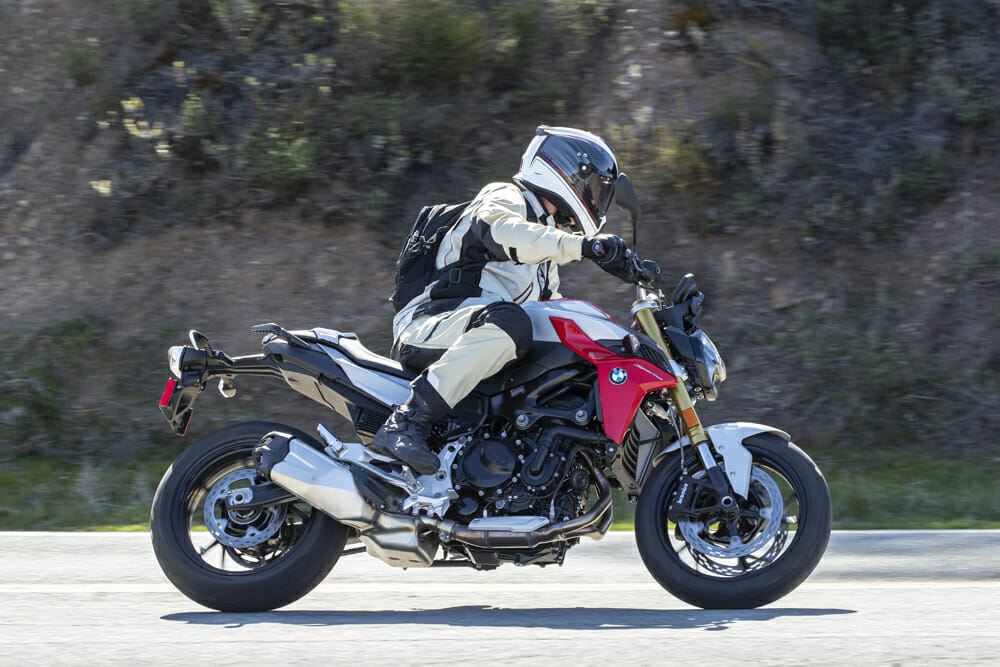 Both the R (pictured) and XR are absolute blasts on twisty backroads, thanks to its torquey and spunky 895cc parallel-twin engine, that also sounds wonderful, and solid yet agile handling.
Both the R (pictured) and XR are absolute blasts on twisty backroads, thanks to its torquey and spunky 895cc parallel-twin engine, that also sounds wonderful, and solid yet agile handling.
2020 BMW F 900 R & F 900 XR Review | Twist The Grip
We recently got the chance to sample both models in Santa Barbara, California, where BMW introduced the two bikes to the media. BMW had a full day of riding planned out, giving us about 110 miles on each bike, 99 percent of which took place on back-country roads.
My first stint was on the R, a bike that thoroughly impressed me. It has one of the best-sounding inline two-cylinder engines you’ll ever hear, with its surprisingly throaty growl and sporty V-twin-like ring. It’s a sound that jump-starts your adrenaline well before you feed in the clutch for the first time.
Power is impressive. Throttle response is instantaneous and exciting. This engine is also rich in torque which maxes out at 6500 rpm, and when you combine that with good overall power, you have a sporty-feeling engine that is ideally suited for the back roads of Santa Barbara. Toggling through the three ride modes, you do feel slight variations, but Road mode felt the smoothest and overall the most pleasurable for all-around riding to me.
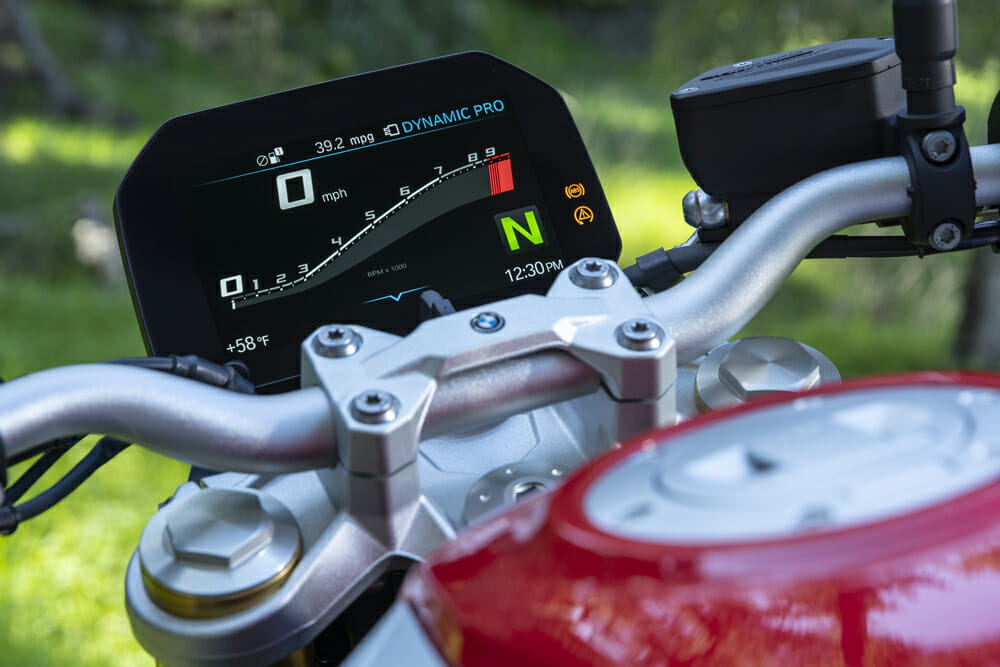 Both F 900s come fitted with the same awesome display found in BMW’s pricier GS line.
Both F 900s come fitted with the same awesome display found in BMW’s pricier GS line.
On the open road, the 900 is very comfortable, too. It hums along without a care at a steady 70 mph with rpm holding approximately 4-4500 rpm. Vibration is all-but non-existence. And there is always plenty of at-speed roll-on power on hand whenever needed.
The small windscreen does a nice job fending off windblast. It’s also two-way adjustable (full up or full down) which you operate by hand via a well-thought-out lever that you can easily operate while on the fly.
The R is a comfortable motorcycle. At 6’1” I had no negative issues whatsoever. It has a very relaxed fit that works well for both casual (touring) and sport riding.
The clutch has a feather-light pull and offers a good feel, and both hand levers are adjustable. I found the gearbox to be a little notchy but nothing to be concerned with; it didn’t take away from the 900’s otherwise excellent powerplant and solid drivetrain experience.
Braking isn’t spectacular but plenty sufficient. Experienced riders might want more initial bite but, the way it is now, is probably better-suited for newer riders, anyway. ABS, which is non-switchable, performs well.
The F 900 R feels light and extremely agile. It meanders effortlessly through the twisties at a comfortable clip and doesn’t balk one bit when the more agro side of you starts kicking in. And the suspension can hang, too, which is a good thing because of its limited adjustability. You probably wouldn’t even think about making any adjustments anyway until you encounter an unusually bumpy road, otherwise, I never felt the immediate need to make any big adjustments, front or rear.
After spending 120 miles on the R, I felt surprisingly fresh with no soreness, which was a good thing, now that I was about to spend the next 120 miles on the XR on many of the same roads we rode the R on, as we head back to our original starting point in Santa Barbara.
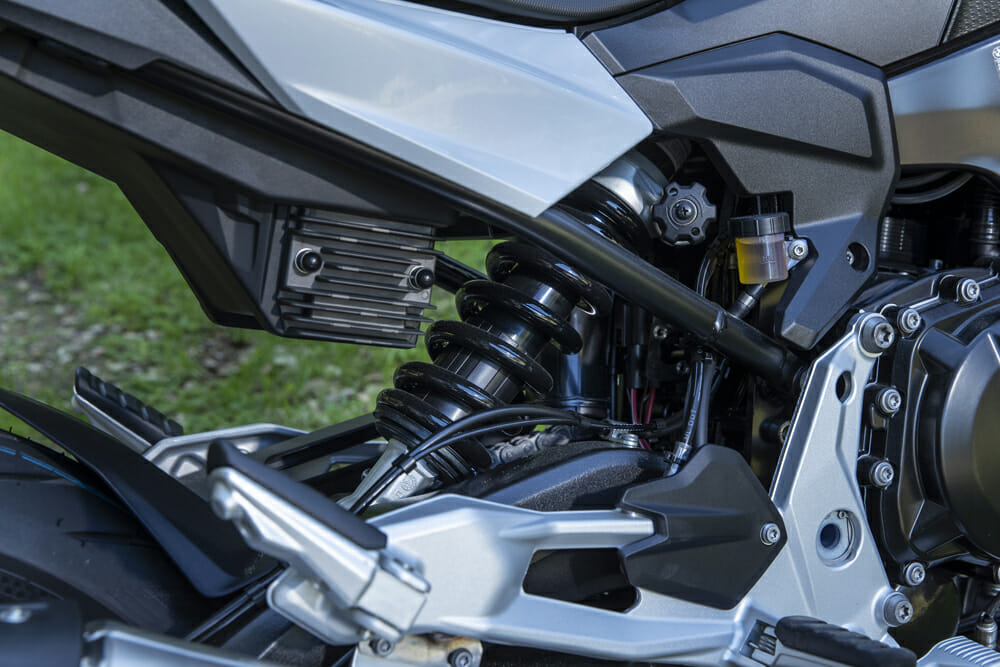 Suspension is pretty basic but actually works quite well.
Suspension is pretty basic but actually works quite well.
2020 BMW F 900 R & F 900 XR Review | Part II: The XR
Like the R, I found the XR to be pleasant and extremely pleasurable to ride. Everything I enjoyed about the R, I pretty much enjoyed on the XR, but there were a few notable differences. The XR, with its slightly taller and wider handlebars, has a more neutral riding position, though it’s not radically different than the R’s. Despite having more wheel travel, the XR did not feel all that much taller than the R, which makes sense since the seat height is only barely a half-inch taller than the XR because of the XR’s more scooped seat. The bottom line, both bikes are extremely comfortable.
I might be in the minority here, but I preferred the smaller windscreen of the R. The XR I rode, the gold metallic version, comes with a taller windscreen than the rest, and, no matter which position it was in, high or low, produced heavy buffeting that seemed to whack me smack dab in the middle of my forehead. I heard no other complaints, so maybe it was just me and my certain height and posture that simply did not jive with the XR’s windscreen. Maybe it also had something to do with the XR’s fairing? Kinda doubt it, but the buffeting did a number on me on long stints.
The TFT dash, which is found on both bikes, is very cool. The display is excellent and relatively easy to navigate and make adjustments via the nav wheel. I found myself using the Sport screen option quite a bit. Here, it entertains you because it monitors lean angle, braking force, and traction-control activation. It records max lean angle per ride (it gets erased every time you turn off the engine), which is quite fun.
Even though the XR falls into the “Adventure” segment, I had no urges to take it anywhere near the dirt. It might have a bit more suspension than the R and better ergos for off-road riding, but it also has the same street tires and nothing else that gives me any desire to get dirty on it.
The XR has more available options than the R, including cornering ABS and cornering lights. I missed heated grips and cruise control that are absent on both bikes but are offered as options.
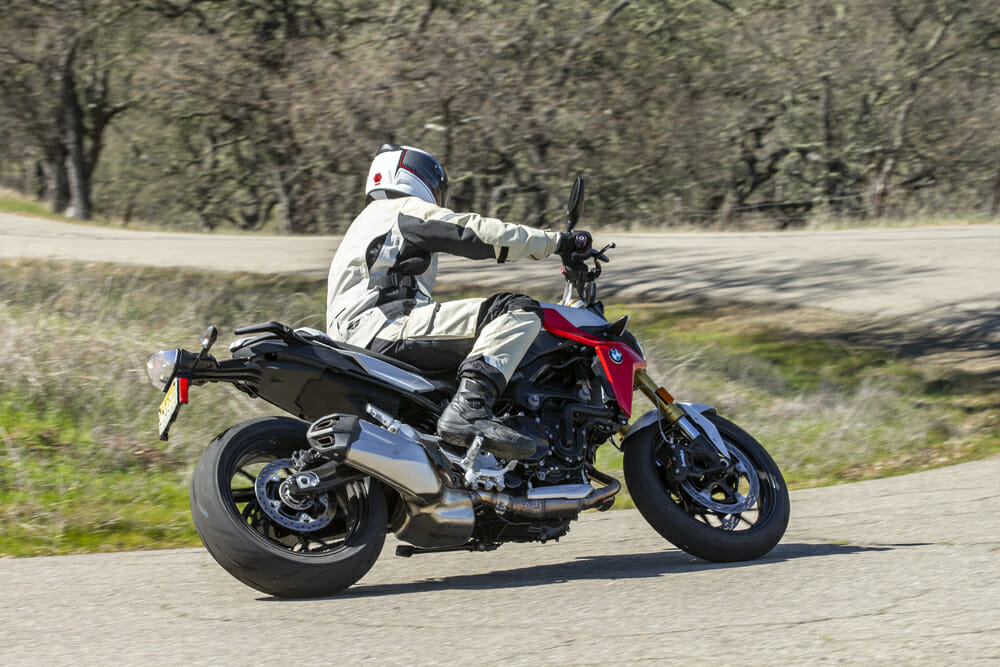 We like the overall value and performance of the F 900 R.
We like the overall value and performance of the F 900 R.
2020 BMW F 900 R & F 900 XR Review | R or XR?
For the money, the R appears to be the better buy here. The R is a steaming deal for just $8995. You get the BMW name and all the quality and performance you come to expect from this company, and a lot more, like LED lighting, a decent package of electronics, and a ton of options to choose from. For $2700 more for the XR, you get about an inch more wheel travel, a larger fuel tank, more weight, slightly different (more neutral) ergos, and a taller windscreen and seat height. Maybe to you, that’s all worth the price. Otherwise, these two middleweights that take dead aim at the popular Japanese middleweights and newer riders, are extremely good motorcycles and just plain great fun to ride, and they get even better when you look at their price tags, especially the R’s. CN
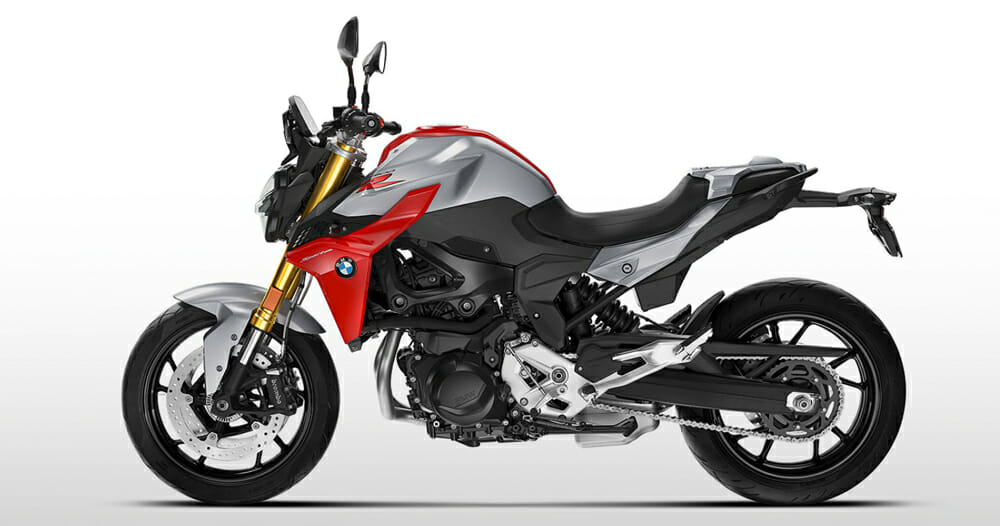
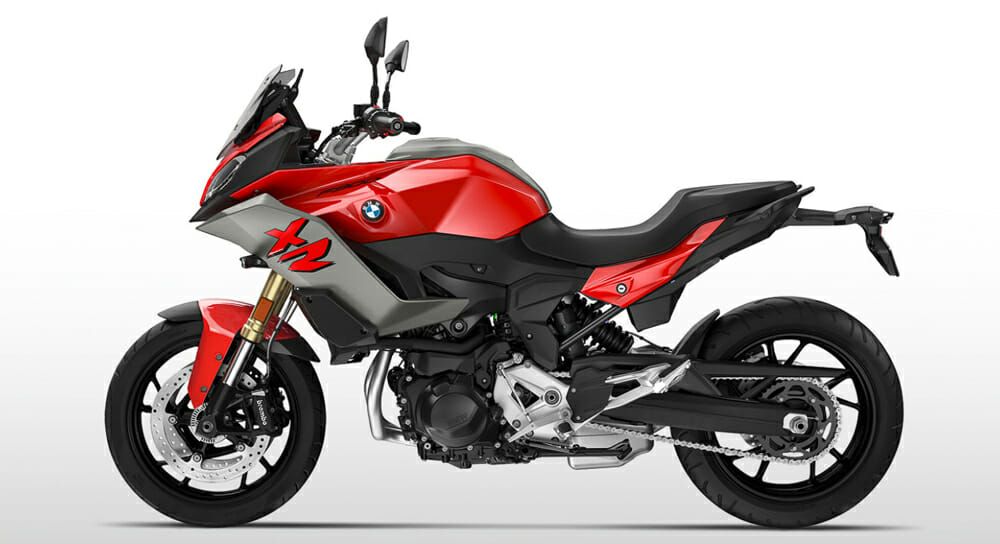
2020 BMW F 900 R / F 900 XR Specifications
|
|
| MSRP: |
$8995 / $11,695 |
| Engine Type: |
Liquid-cooled, in-line, 2-cylinder, DOHC, 8-valve, 4-stroke |
| Displacement: |
895cc |
| Bore x Stroke: |
86mm x 77mm |
| Horsepower (claimed): |
99 hp at 8500 rpm |
| Torque (claimed): |
67 lb-ft. at 6500 rpm / 68 lb-ft. at 6750 rpm |
| Compression Ratio: |
13.1:1 |
| Engine Management: |
EFI |
| Transmission: |
Constant mesh 6-speed |
| Clutch: |
Multi-disc, wet clutch (anti-hopping), mechanically operated |
| Final Drive: |
Chain |
| Frame: |
Bridge-type, steel shell construction |
| Front Suspension: |
Inverted 43mm telescopic fork |
| Rear Suspension: |
Cast-aluminum dual swingarm, central spring strut, spring preload hydraulically adjustable, rebound-damping adjustable |
| Front-Wheel Travel: |
5.3 in. / 6.7 in. |
| Front Brake: |
Dual floating discs, 320mm, 4-piston radial brake calipers, ABS |
| Rear Brake: |
Single disc, 265mm, single-piston floating caliper, ABS |
| Wheelbase: |
59.7 in. / 60 in. |
| Rake: |
29.5° / 30° |
| Trail: |
4.5 in. / 4.1 in. |
| Front Tire: |
120/70 ZR 17 |
| Rear Tire: |
180/55 ZR 17 |
| Seat Height: |
32 in. / 32.5 in. |
| Weight (curb, claimed): |
465 lbs. / 482 lbs. |
| Fuel Capacity: |
3.4 gal. / 4.1 gal. |
